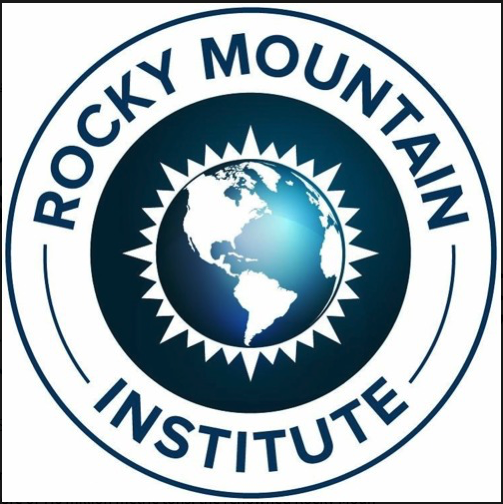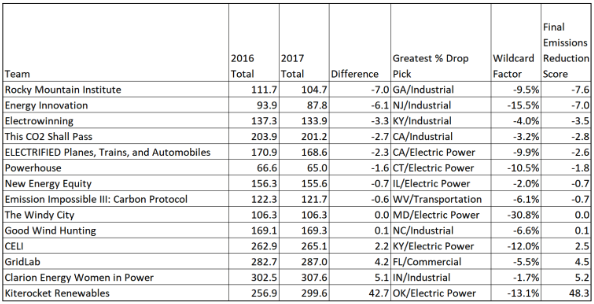Inaugural Fantasy Energy League: The Final Results!
Ever since January of this year, when I assembled some of the best energy minds on the Internet and from across #EnergyTwitter, we’ve been building to this moment. I asked these very busy professionals to put their extensive knowledge, deep networks, and impressive histories to good use in…a fantasy energy league? It may have seemed like a silly idea, but I do believe these kinds of projects are what can bring new audiences and eyeballs into the fray and, in this case, get people to consider more carefully what types of climate change and clean energy policies are most effective, what strategies are and aren’t working, and where the industry should go. Much debate is actively going on on climate change, and as report after report has shown: we are running out of time.
Photo Source: The Conversation
So, I was enthused when over a dozen of these experts agreed to participate in my game/academic thought experiment/exercise in energy nerd-ery. And I will say, I heard from more than one of these participants that what started as a friendly exercise has turned heated! Trash talk on Twitter, speculating on who the favorites to come in last are at energy conferences, and even some wagers with the losers donating money to charities of the winners’ choice. Lots riding on this, so let’s get to it!
If you’re reading this, you’ve likely already followed the Fantasy Energy League, but just as a catch up, here are the articles to review to catch up:
The Inaugural Fantasy Energy League’s Official Draft Preview: Game On!
Fantasy Energy League Draft Follow-Up: Breaking Down the First Round
Fantasy Energy League Draft Follow-Up: Second and Third Rounds
And a review of the rules and ultimate objective:
Among the 5 sectors (electric power, residential, commercial, industrial, and transporation) of energy use, each team had to pick a different state with the goal of finding those with the greatest year-over-year drop in absolute CO2 emissions from 2016 to 2017 (the 2016 data were released in the Fall of 2018, and the 2017 data to be released a year later).
Teams would also get a ‘wildcard factor’ based on which of their five selections saw the greatest percentage decrease year-over-year emissions, and that percentage drop would then be applied to their entire ‘roster’ of picks.
Greatest final year-over-year drop is the winner.
And now, without further ado, the U.S. Energy Information Administration just released the latest data (for the 2017 year), and I’ve had more than one participant in my ear asking about when results would come out, so let’s get to it!
Results
A drumroll please to announce the ultimate winner….
Rocky Mountain Institute Takes Home the Crown!
Photo Source: Rocky Mountain Institute
With a total emissions reduction from 2016 to 2017 of 7.0 million metric tons and a wildcard factor of 9.5% for a final score of 7.6 million metric tons, the renowned Rocky Mountain Institute can add another feather to its organization’s cap.
The final results of all 14 teams lines up as follows:
The full results for each of the 5 picks for all 14 teams can be found in this Google sheet so you can see the pick-by-pick breakdown, dive deeper into the results, and see where things went wrong for your team.
As the above table shows, the wildcard factor didn’t end up shifting the order of the final results around any, so it really did come down to who straight up picked the most reductions. Interestingly, out of 5 picks for each team, only an average of 2.5 of those sector selections actually saw a year-over-year reduction. No one got all 5 sectors to reduce, with Rockey Mountain Insitute and Energy Innovation (the top two performers) being the only ones to see reduction drops in 4 out of their 5 picks.
On the other end of the spectrum, 6 out of 14 teams actually saw an overall increase in their selections’ aggregation emissions from 2016 to 2017. Unfortunately for Kiterocket Renewables, their first overall selection of Texas Industrial saw a 43% increase in emissions for total gain of 46.3 million metric tons of CO2. Oops!
A few more interesting tidbits:
The best pick of the draft in terms of absolute emissions reduction was the first-round selection of CELI: the Kentucky Electric Power Sector which went from 72.6 million metric tons of CO2 emissions in 2016 to 63.9 million metric tons in 2017, an 8.7 million metric ton (12%) year-over-year reduction. Outstanding pick!
On a percentage basis, the greatest year-over-year reduction came from the Windy City’s second selection of Maryland Electric Power. By dropping 31% from 2016 (17.2 million metric tons) to 2017 (11.9 million metric tons), Windy City was awarded the most valuable wildcard factor.
As for worst picks, that again goes to the aforementioned Texas Industrial pick from which Kiterocket Renewables was unable to recover.
Photo Source: Canva
The Perfect Team
So there were some ups but surprisingly many downs in the selections made across these 5 rounds for all teams. What would the perfect roster of 5 states/sectors have looked like? Ignoring the wildcard factor, the best states to select in each state would have been:
Commercial Sector: District of Columbia reduced 0.40 million metric tons (this was not selected by anyone)
Electric Power Sector: Kentucky was previously mentioned as the best pick of the draft, and Team CELI nailed that with their first pick
Residential Sector: Texas reduced by 0.85 million metric tons and was selected in the second round by the champion Rocky Mountain Institute
Industrial Sector: California took the cake here by reducing industrial emissions by 2.22 million metric tons and represented the second-round pick of Team This CO2 Shall Pass, the fourth-place finisher
Transportation Sector: New Jersey saw a stunning drop of 4.76 million metric tons of CO2, which was astutely grabbed by Team CELI in the second round (this team absolutely knocked their first two picks out of the park and looked strong through the draft, but ultimately let glory slip through their fingers by selecting Louisiana’s industrial sector in the last round which increased by 16 million metric tons).
If teams were trying to capture the optimal wildcard factor, they missed out by whiffing and not picking Vermont’s Electric Power Sector which only dropped by 0.06 million metric tons, but which represented a 493% drop!
Lessons Learned
The point of doing this type of exercise was to think about clean energy and climate policy in a new way, so what are some useful takeaways? As I reviewed the results, I was surprised at just how hard of an exercise this ended up being. Keep in mind this was a group of renowned energy industry voices who were looking to predict emissions data from nearly two years ago. The goal was to look at what advances each state made via policy and technology and predict how the emissions data ultimately shook out, and that we had so many missed picks and false assumptions show just how difficult this area of study and public policy still is.
Another metaphoric lesson learned came from the fact that nearly half of the teams actually saw their emissions in aggregate increase. This result demonstrates how much all these climate-focused policies are still an uphill battle, fighting growing populations and ever-increasing energy demand while trying to minimize the CO2 emissions that are released to the atmosphere as a result. Not only that, but the fact that so many teams made good picks with emissions reductions only to have a final result of increased emissions in aggregate shows that efforts to clean up the energy-consuming sectors need to be all-encompassing or we won’t see the progress we need in the coming decades in order to stave off the worst of climate change.
Lastly, a lesson this Fantasy Energy League Commissioner learned is just how engaged and excited the energy community is to take part in experimental debates! I think each and every participant for their enthusiasm and the time they took out of their schedules to participate. I’d say I should definitely owe team Rocky Mountain Institute dinner the next time our paths cross for their victory, but I’ll say I’ll buy a beer/coffee/ice cream cone/whatever to any other participants at the next industry conference I see you.
And finally– shall we run it back? Who’s in for Fantasy Energy League Season #2?!






